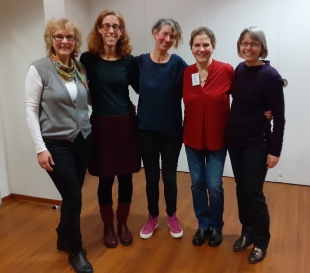 Traditional warm-up pic: with added antlers
Traditional warm-up pic: with added antlers
I spent the weekend up in snowy Aberdeenshire with the Granite City Chorus at their annual retreat. They have an effective structure for the event, which they hold at a hotel about 45 minutes out of the city where they’re based – close enough for convenience, but far enough to feel bracketed off from regular life. We had a full day for coaching on the Saturday, followed by a convivial evening, with a nice balance of planned activity (meal, quiz, singing) and unstructured social time. Sunday’s work finished with lunch, meaning everyone could find their way back to real life before they got too wiped out.
The thing that makes this structure so effective is the chance to work on things, then revisit them after a night’s sleep. It is during sleep that new skills and knowledge get transferred from short-term memory into longer-term storage, so on the second day you discover which bits made that journey safely, and which bits fell out en route. There’ll always be some of each, but you can’t tell in advance which will be which. It also gives you the opportunity at the end of the first day to discuss together what people would like to spend time on in the morning. As a coach, this means you go in better prepared, and as a singer you go in primed for what’s coming next.



